Off the Beaten Path and into the Wild With Wild Tracks Belize
In tonight’s episode of Belize on Reel, we journeyed far north to Sarteneja where we visited Wild Tracks Belize. It’s a conservation organization that was established a little over thirty-three years ago by husband and wife couple, Paul and Zoe Walker. Together, they have worked tirelessly to rescue, protect and raise awareness about manatees and monkeys, as well as other mammal species native to Belize. News Five’s Isani Cayetano headed to the far-flung coastal community and has the following story.
Isani Cayetano, Reporting
Manatees are a keystone species that play an important role in maintaining the health and diversity of aquatic ecosystems. They are also a beloved marine mammal that face many threats from human activities at sea and in rivers. As a conservationist, Paul Walker has dedicated much of his life protecting these amazing creatures.
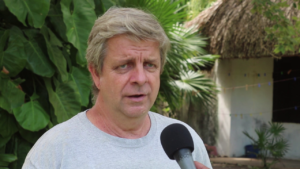
Paul Walker
Paul Walker, Director, Wild Tracks Belize
“We started working with manatees in 1999. So you may remember the name Woody, Belize’s first orphaned manatee that was raised and rehabilitated in Belize. That was done here and he was successfully released down in Southern Lagoon. And when he was successfully released we were then asked to become the national manatee rehabilitation center and we were like, “Uhmm, we didn’t sign on for that.” But at that point, no one else was stepping forward and we had learned quite a lot about manatees with that one.”
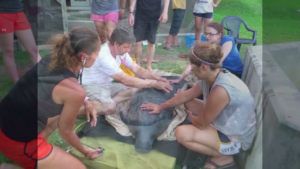 Manatees, or sea cows as they are locally called, are a cultural and economic asset for Belize. They attract tourists, researchers and educators and have a long history of coexistence and interactions with humans. When Paul Walker and his wife, Zoe, established Wild Tracks Belize in 1990, after relocating from the UK three years earlier, the couple did not foresee that its conservation efforts would become what it is today.
Manatees, or sea cows as they are locally called, are a cultural and economic asset for Belize. They attract tourists, researchers and educators and have a long history of coexistence and interactions with humans. When Paul Walker and his wife, Zoe, established Wild Tracks Belize in 1990, after relocating from the UK three years earlier, the couple did not foresee that its conservation efforts would become what it is today.
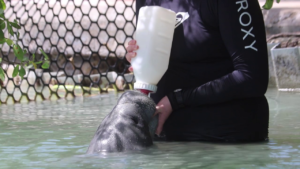 Paul Walker
Paul Walker
“Back in the end of 2010, the mandate for primate rehabilitation also transferred to Wild Tracks by the Forest Department and that’s really when our wildlife rehabilitation program mushroomed significantly. Numbers went up. Manatee numbers in rehabilitation, thankfully, are generally quite small, an ongoing trickle, whereas the monkey rehabilitative needs are much, much more extensive.”
So much so that Wild Tracks Belize has had to expand its operations. The organization, located in Sarteneja, has a dedicated staff. It is also assisted by volunteers who come down to Belize to learn more about monkeys and manatees.
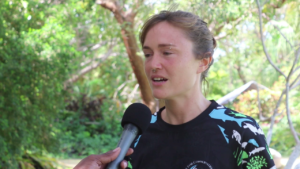
Kyra Dixon
Kyra Dixon, Manager, Wild Tracks Belize
“My love for wildlife started when I was a child. I was actually interested in both manatees and primates, so this is the perfect place for me. I started off as a volunteer and hopefully I showed leadership skills. I came back as an intern leading the day-to-day tasks with the animals and the volunteers and then I was asked to stay on to manage. I think it’s been sort of a learning experience throughout the years that I’ve been here, developing my role and I think I am now finally settling into it and really enjoying my position.”
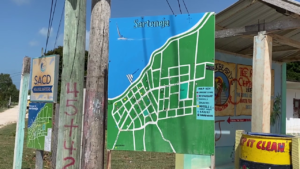 Along with a volunteer, Kyra Dixon enters the shallow water in an enclosure at the edge of the Sarteneja Lagoon. Together, they are bottle-feeding a pair of rescued manatees, a little over a year old. It’s part of a list of responsibilities that is carried out every day to ensure that these animals are fed, taken care of, and properly rehabilitated.
Along with a volunteer, Kyra Dixon enters the shallow water in an enclosure at the edge of the Sarteneja Lagoon. Together, they are bottle-feeding a pair of rescued manatees, a little over a year old. It’s part of a list of responsibilities that is carried out every day to ensure that these animals are fed, taken care of, and properly rehabilitated.
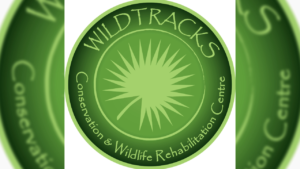 Paul Walker
Paul Walker
“In terms of logistics, it can be difficult at times, particularly under COVID. So we use huge amounts of feed for the animals in rehabilitation. Typically, we’d be spending a little over a thousand dollars per week just on fruits for the fruit-eating animals, plus the milk powders and the solid foods, and pellets, everything else that go in. During COVID, that was a significant logistical challenge when northern Belize was closed off from southern Belize for those first few weeks. The bananas that we use come from southern Belize, so even just having clearance to get bananas in was difficult.”
With those challenges behind, the focus continues to be on the animals and their wellbeing. On the wooded property, there are monkeys, lots of them, and they are as agile as they are playful.
 Kyra Dixon
Kyra Dixon
“I think there is never a normal day at Wild Tracks, something’s always happening here. But yeah, I definitely do rounds with all the animals, making sure that all the animals are healthy and being fed properly, behaving properly. I do a lot of oversight of integrations, so having animals meet each other for the first time, building troops for the wild or groups for releases and then oversight of food prep for the animals, enrichment for the animals. We make a lot of toys and that sort of thing for the animals to play with while they are here at Wild Tracks.”
Howler monkeys are a group of large, loud, and leaf-eating primates. It is important to conserve them because they are a source of biodiversity. These primates also act as seed dispersers that help to regenerate and maintain the forest. For its continued work in conservation, Wild Tracks Belize has been recognized at home and abroad.
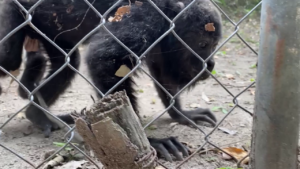 Paul Walker
Paul Walker
“It’s always appreciated and humbling to actually receive acknowledge. So the first and significant acknowledgement was being awarded the James Waight Award through Belize Audubon Society some years ago. That’s a very significant national award and we were really delighted to be recipients of that. More recently, we were on the King’s New Year’s Honors list receiving MBEs which was completely out of the blue and that means that someone here in Belize has recommended us for that and somewhere in Britain they’ve done the background and found that yes, what they were being told was credible and indeed we received the two MBEs which was very humbling.”
The recognition, Walker maintains, is for the work of the entire team at Wild Tracks Belize. Isani Cayetano for News Five.






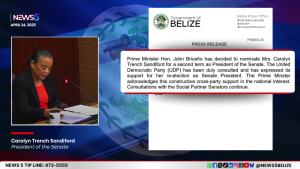
Facebook Comments